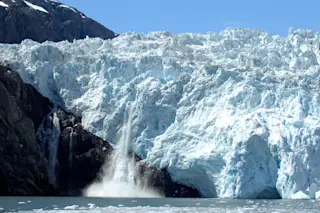As the world warms, plants are seeking higher ground. A new study that examined botanical surveys of European mountain ranges over the past century found that plants are slowly moving to higher elevations in order to stay within their ideal temperature zones.
More than two thirds of the plants in six western European mountain ranges have climbed an average of [95 feet] in altitude each decade since 1905 [CBC].
The study, published in the journal Science [subscription required], is the first to bring the positive news that many mountain plants are able to adapt to the rapid changes brought by global warming. But there are troubling ramifications.
The team also discovered that different types of plants are moving at different rates. "Long-lived plants like trees or shrubs did not show a significant shift, whereas short-lived species like herbs showed a strong upward shift in elevation," [lead researcher Jonathan] Lenoir said. ...














